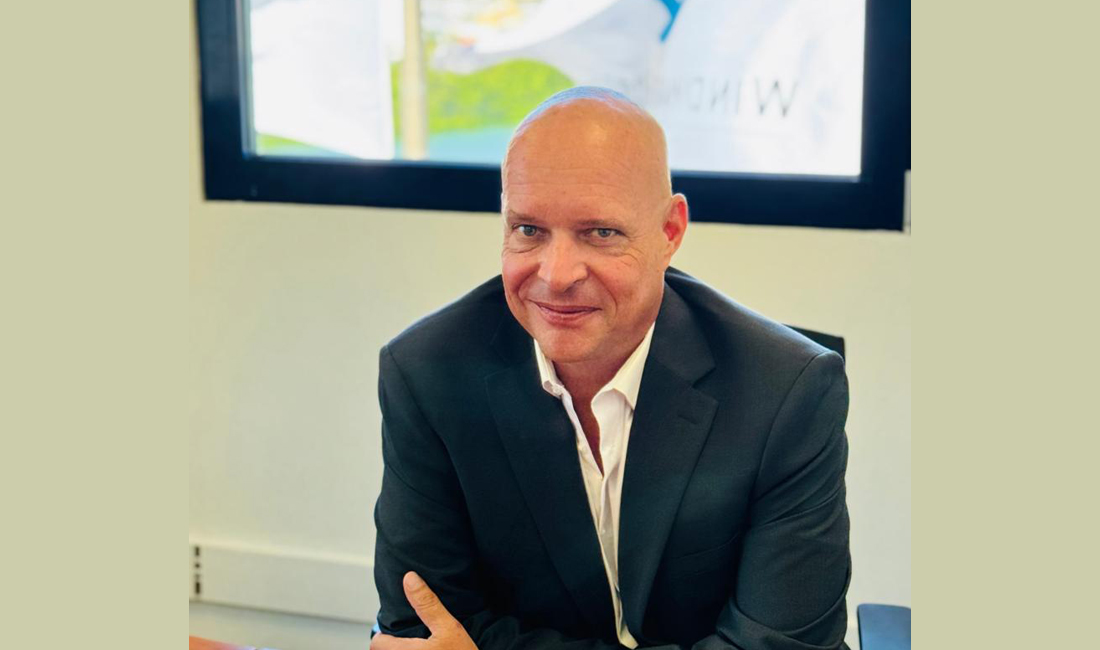
24 Jun Interview with Michiel Witteveen, Windward Roads Infrastructure B.V., Sint Maarten
Over 90 percent of food products imported into Sint Maarten originate from Miami. How strong are the connections today between the U.S., particularly Florida, and Caribbean partners like Sint Maarten in trade and industry, particularly through transport networks?
The U.S. and Sint Maarten have a strong connection. We rely more on the U.S. market than on our Kingdom partners, Holland. Tourism is our main source of income and around 80 percent of it comes from American visitors. About 80-90 percent of our supermarket groceries come from the U.S. since it’s the easiest option logistically. So, the connection is very strong and that’s our future.
What strengths would you say the Sint Maarten economy offers today for international investment and partnerships, particularly in the infrastructure and construction sectors?
Many U.S. investors are already investing in Sint. Maarten, especially in real estate and the hospitality sector. However, our infrastructure isn’t yet strong enough to keep up with our rapid growth. Partnering with the U.S. to invest in upgrading infrastructure would not only enhance the island’s value and appeal but also bring long-term benefits to both the people of Sint Maarten and its investors.
Could you share with our readers the dynamics of Windward Roads’ growth story and the influential role you see it having played in the island’s economy?
Windward Roads is a Dutch infrastructure company that has been operating for nearly 90 years. In the 60s, the company started an infrastructure business that was successful on the ABC islands i.e. Aruba, Bonaire and Curaçao. Then, in 1986, the company expanded to the Leeward Islands, including Sint Maarten and later to Saba. In 1986, Windward Roads started as a purely infrastructure company, partnered up with the government and other parties. We have been the leading infrastructure company since then in Sint Maarten.
Over the years, we’ve grown and we now have a commercial concrete facility where we supply concrete to both other contractors and ourselves. We produce and supply asphalt, which is unique on the island, as there is only one asphalt facility on the Dutch side. We also started some construction work. For projects after the hurricane, we carried out several renovation projects, including schools, sports facilities and fire and ambulance services, helping the country recover and get back on its feet after 2017. It was pretty successful.
We are now doing several upgrades of the runway. We have the second busiest airport in the Caribbean. We last worked on the airport runway in 2011 or 2012, so it needs attention again. We’ve been working for the harbor as well. The new government is doing well and has the funds. We’re currently working on a large road resurfacing contract, which involves repairing the existing asphalt roads. It will take a few more months and then the next phase will begin. Hopefully, we’ll continue into the next budget cycle, allowing us to keep fixing the existing roads. We’re always brainstorming with the government, looking for new ideas to improve traffic flow.
What major infrastructure projects are you currently prioritizing and how do they align with Sint Maarten’s long-term development goals?
Currently, due to local legislation, several roads that are technically private are used by the public as main roads. The issue is that the road is owned by homeowners’ associations, not the government, in certain areas. Together with the government, the prime minister, ourselves and the homeowners, we’re working on several of these roads to find solutions, as some of them are in deplorable condition. With investment from the homeowners, the government and us we can make those upgrade projects happen.
For example, the road through the golf course has potholes larger than a car, but we’re looking at projects like that to address the issue. For the rest, we’re largely reliant on the government for the larger infrastructure projects across the island, but we’re always partnering up. Companies like ours invest in a project and get paid back over time through the government’s payback system.
How does Windward Roads plan to expand further in the future and what subsectors and projects offer the most promise for future growth?
Sint Maarten is a small island and we depend on what happens here. While we can make things happen, we are limited in scale. We try to operate lean to maintain a healthy business. Currently, we have six companies across four islands and about 100 employees, most of whom are local. Our goal is to stay as local as possible. To stimulate the local economy, we aim to create a more welcoming and friendly environment, as tourism is our main source of income. Growth isn’t necessarily what we need; continuity is. We’re working with the government to find ways to improve that, ensuring funds are allocated properly so we can continue fixing roads, expanding infrastructure, building more sidewalks and so on.
There are new developments taking place. One standout is the Vie L’Ven project in Indigo Bay, a five-star-plus resort with over 200 upscale keys. This development will elevate tourism in Sint Maarten to a whole new level. It will feature the first Michelin-starred restaurant in the Caribbean, which is incredibly impressive. FT Construction, from Teboul, is building major projects like Aqua Resort, Towers 14 is already finished, as well as the Dolce Resort. These are beautiful developments offering investors the opportunity to buy properties that they can rent out, sell, or use however they wish.
When undertaking complex infrastructure projects, like airport upgrades or major road networks, what role do partners from major countries like the USA play and what other partnerships would you be interested in the future?
Because of our limited size and resources, we aim to find balance, especially in engineering. Since we use the metric system, our standards can be a bit different from the U.S., however when it comes to purchasing, we always look to both the U.S. and Europe to find the best place to buy our products. As a supplier of construction materials, both markets are very interesting for us. At the moment, there are various developments underway, like the Vie L’Ven project, which involves Canadian and American investors. All the engineering is done in Miami, so the standards we follow are U.S.-based. We’re not even allowed to source certain supplies from Europe because their standards differ. When the standards come from the U.S., we’re often required unless proven otherwise to purchase materials from the U.S. as well.
We have several shops selling construction materials here. ACE is the only American supplier, while most of the others are European. That creates some openings, especially since Sint Maarten serves as a hub for the surrounding islands, which are much smaller. Everybody has to go through us in order to go to Saint Barts or Anguilla the airlines fly to Sint Maarten before they fly to more islands. The same thing goes with supplies. Everything goes through our very busy harbor and it gets divided into smaller containers and goes on. A lot is going through these islands, so retail-wise, it’s an interesting location.
How are you integrating climate adaptation and mitigation strategies into your projects and how does this impact the readiness of your projects?
Our roofs are equipped with solar panels and we’re fully committed to solar energy. We’re also beginning to purchase electric vehicles, with the third one arriving this week — something we’ve never done before. Additionally, we’ve signed an agreement with the Harbor Group of Companies to explore the possibility of creating a business case for glass recycling. Many in the cruise industry are interested in delivering sorted, pre-crushed glass in different colors, which we could potentially use in asphalt, concrete production, piping infrastructure projects and more. We’re also looking into the reuse of aggregates and concrete for a certain percentage.
With Floridians counting among the main tourists visiting the Caribbean and the beauty of Sint Maarten waiting to be explored, what message do you have to the Miami business community and Floridian tourists about visiting and discovering your island?
I would recommend Sint Maarten to anyone who loves a great beach holiday with a mix of culture and nature. It’s an amazing destination with plenty of opportunities to relax and enjoy yourself. The island offers fantastic food, blending both Dutch and French influences. For investors, there are great opportunities here. While it’s not always easy, the potential for high returns and personal fulfillment is there. Even after a storm, there’s always a market in Sint Maarten and there are many areas to invest in.


Sorry, the comment form is closed at this time.